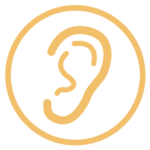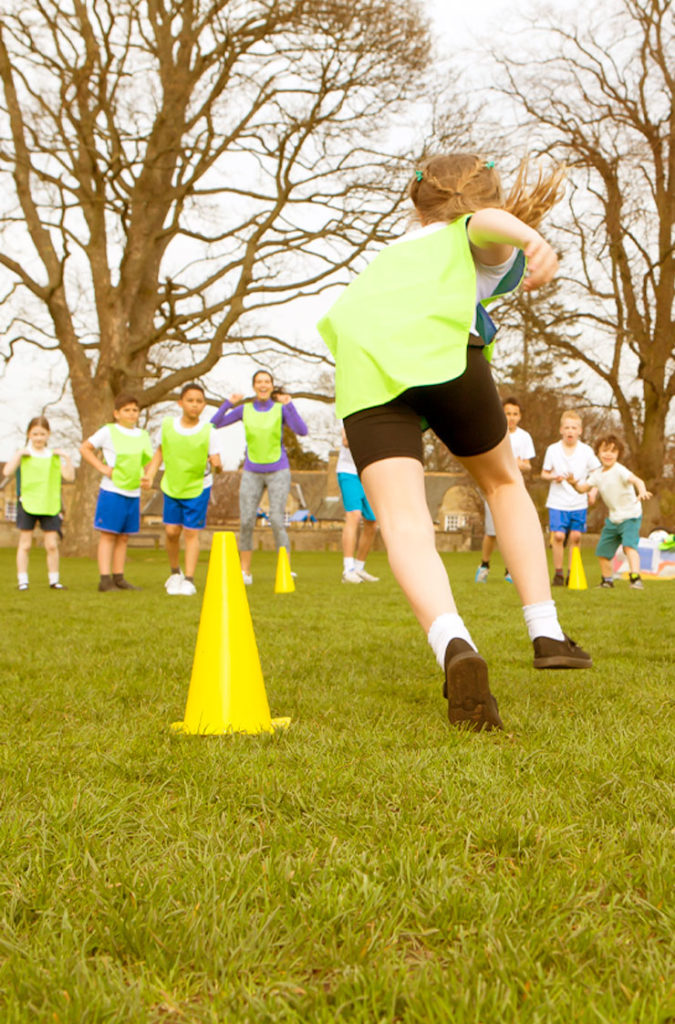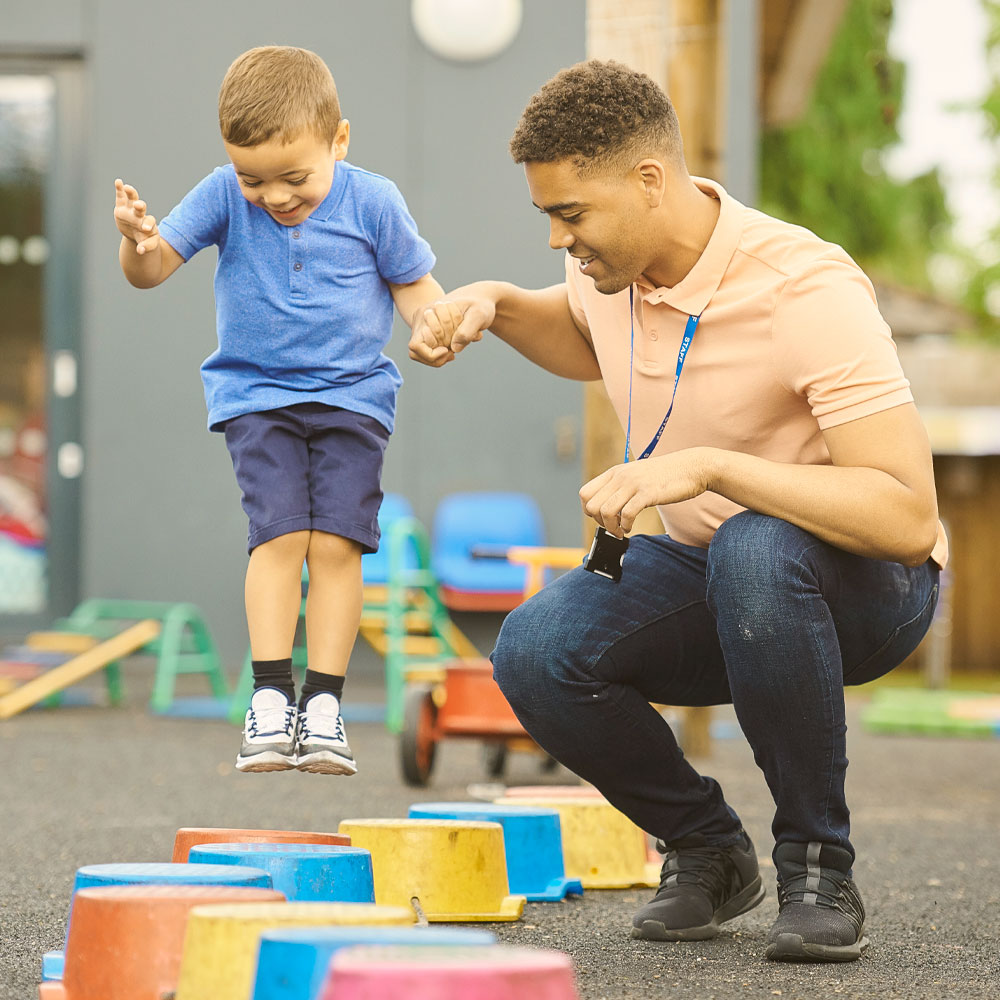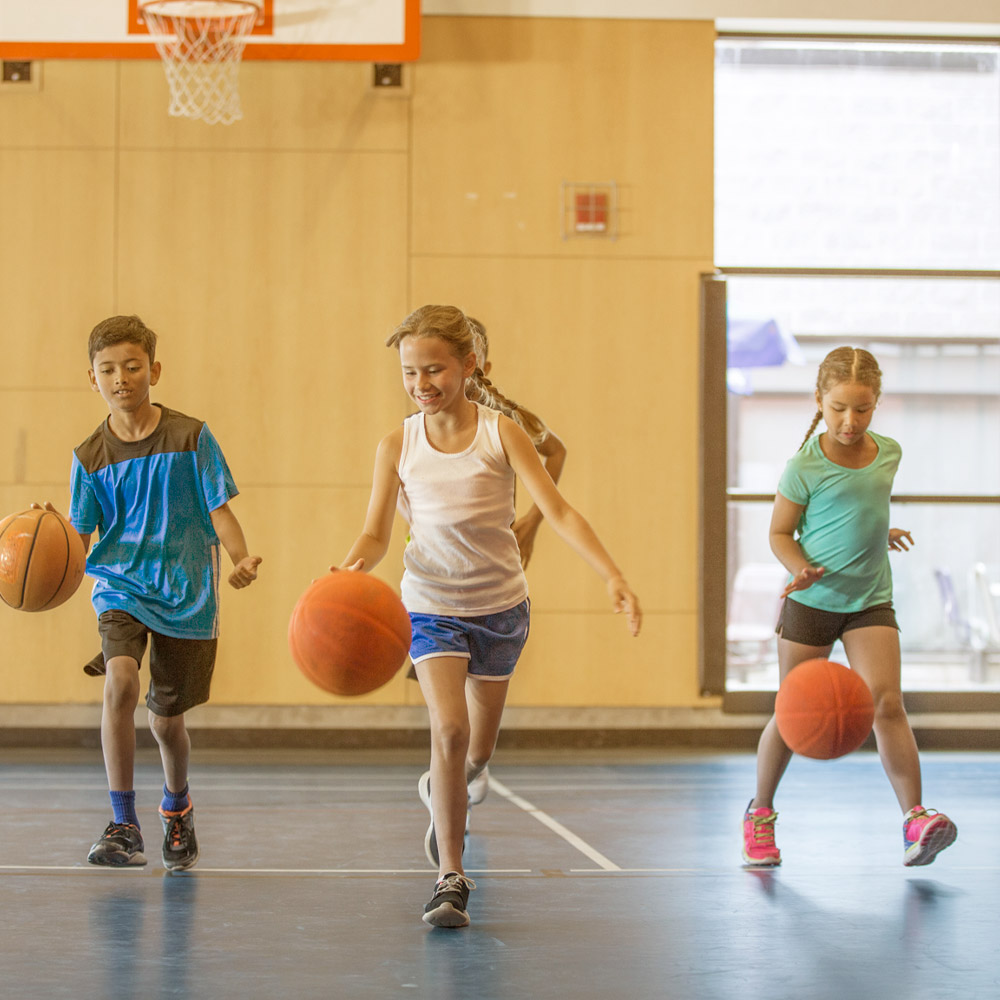
The focus is on the senses in this module, specifically sight and hearing.
The International Classification of Diseases 11 (WHO, 2018) classifies vision impairment into two groups, distance and near presenting vision impairment.
Distance vision impairment:
Near vision impairment:
Presenting near visual acuity worse than N6 or M.08 with existing correction. (WHO, 2020aBlindness and visual impairment.)
Hearing Loss and Deafness
A person is said to have hearing loss if they are not able to hear as well as someone with normal hearing – hearing thresholds of 20 dB or better in both ears. It can be mild, moderate, moderately severe, severe, or profound, and can affect one or both ears. Hearing loss has multiple potential causes: genetic factors, complications at birth, infectious disease, chronic ear infections, usage of certain drugs, exposure to excessive noise, and aging.
The term ‘deaf’ is used to describe the condition of people with severe or profound hearing loss in both ears as they can hear only very loud sounds or not hear anything at all.
The term ‘hard of hearing’ is used to describe the condition of people with mild to severe hearing impairment as they cannot hear as well as those with normal hearing (WHO, 2020bHearing loss.).
- Use a “clock system” for knowing where things are. You can tell the goal posts are at 12:00 which means it is straight ahead of the child. (VVisual)
- Other children can describe the environment to the child, how many are on the team and where they are standing to wait their turn. (V)
- The child can find out who is around them and where they are going by having other children tell them. (V)
- Other children can assist by telling them information, explaining that they can assist by explaining that they are about to hold their elbow and walk one step behind. (V)
- Lines on the floor. (V)
- Fluorescent tape can be used to mark boundaries in the gym and outdoors. (V)
- Guide rails. (V)
- Auditory lines. (V)
- Roped boundaries. (V)
- Ropes taped on the floor. (V)
- Mirrors on wall. (V)
- Assess the distance the child can hear you or see you. (HHearing)
- Evaluate the acoustics in PE facilities. (H)
- The teacher should be facing the sun outdoors and not the children.
- Provide instructions for external providers supporting the PE lessons.
- Avoid other sources of noise when instructing e.g. music and fans.
- Create a climate of safety for all.
- Tactile modelling. (VHVisual and hearing)
- Individualised instruction. (VH)
- Support for a Teaching Assistant (VH)
- Use videos to assist instruction and turn on captioning or provide a transcript. (VH)
- Use a buddy system and peer tutoring. (VH)
- Do not walk around the gym while giving instruction. (VH)
- Establish a ‘stop and look’ strategy which is based on a visual signal (combined with auditory for your visual impaired students). It could be a coloured flag, a hand signal, a wave, or something else that works for your setting. (VH)
- Use signs and gestures. (HHearing)
- Proximity (stand close to the student). (H)
- To attract attention, wave or tap the child on the shoulder. (H)
- Stand still and face the child. (H)
- Avoid exaggerated lip movement. (H)
- Sign language. (H)
- If using an interpreter, ensure the interpreter is standing directly to the teacher’s side. (H)
- Make sure you speak clearly and at a normal rate. (H)
- Make sure you are looking at each other when you talk. (H)
- Other children can assist by telling them information. (VVisual)
- Railing for assistance. (V)
- Auditory bases. (V)
- Ball harness on an elastic rope. (V)
- Bell/Beeper balls/auditory balls for activities, rice in a beach ball or volleyball. (V)
- Follow peer or leader. (V)
- Brightly coloured balls or those that offer a high contrast to their surroundings. (V)
- Yellow/brightly coloured equipment. (V)
- Peer runner guide. (V)
- Boundary limitations. (V)
- Visual shooting line. (V)
- Promote independence e.g. use guide wire system or rope that is securely anchored to an eye hook or attached to poles. (V)
- Attach a PVC tube to the rope/wire so the student can hold the tube and run along the rope. (V)
- Print new vocabulary (V)
- Clap behind bases to add auditory cue for those who need it. (V)
- Clap in front for those who need it to show direction of movement e.g. pencil roll, run towards the sound source. (V)
- Include the child as much as possible and don’t leave him/her alone. (V)
- Simple games can be adapted easily, but it may be more challenging to adapt team sports.
- Answer the child’s questions and make sure they are included in the conversations.
- Students will need to acquire the motor skills underpinning the games.
- Skills needed to play in games may need to be taught in isolation.
- Keep verbal instructions short, simple and to the point supported by visually demonstrations.
- Stations (Teaching).
- Demonstration (Teaching).
- Tasks cards (enlarged if required) (Teaching).
- Verbal or visual supports (Teaching).
- Feedback.
- Use a whiteboard or flip chart to write down key points.
- Ask children to repeat directions and instructions and/or to demonstrate the skill. Do not ask yes/no questions to check understanding
- Include relaxation in cool down activities.
- Promote body awareness and posture.
- Include muscle strengthening activates following warm ups and in gymnastics
- Work closely with the parents and the child’s physician if you are unsure of the degree of involvement that is permitted and be alert of undue physical stress. (VHVisual and hearing)
- Acquire information about the child’s additional need from the child and their support network. (VH)
- Identify supports and strategies to meet individual needs as recommended by the child, their family / caregiver and other professionals. They may include hand gestures. (VH)
- Learn key sign language for PE e.g. if you are teaching aquatics, focus on the signs for water, swim, front, back, towel, wet, stop, look. (HHearing)
- Ensure that any adult supporting the child’s learning in physical education does not cause other children to hesitate at inviting the child to be a partner or in a group in the PE lesson. (VH)
- Set a routine for the PE lesson and sequence of events to occur in the lesson. If the routine is to change, warn the children in advance.
- Be patient.
- Peer support. Help the other children in the class to understand and teach them how to support positively.


Severe Visual Impairment
Suzanna is participating in the hurdles in athletics. She is working with a partner. The teacher has Suzanna walking initially to get familiar with the space and equipment and to her partner’s commands. Suzanne progresses to running over flat markers or running over lines. Suzanna’s partner claps when she approaches the hurdle/line/flat marker. In the lesson, Suzanna also tries to walk at a controlled pace towards a low-lying obstacle e.g. a low cone, and step over at the centre of the obstacle: line up and walk to obstacle, upon reaching obstacle make some attempt to raise a leg, and with her teaching assistant support attempt to lift the leg over the obstacle. Further progression can be made to ‘follow a leader’ to step over a row of low-lying hurdles by walking towards the hurdles and watch the leader lift each leg one at a time over the hurdle, step closer to the hurdle, and step over it without touching the top of the hurdle. The teaching assistant is there to provide assistance if Suzanne requests it. Suzanne is so happy to be active and participating in the lesson with her peers.
Blind
John has been developing some Goal Ball skills of ball rolling and throwing in a straight line to a partner and in groups of 4 and 6. He has progressed to using a zig zag formation using a bell ball. The teaching assistant uses a clap to denote the direction the ball is to be thrown by John. Sometimes the children in his group tap the floor to indicate the next pass direction for John. John enjoys this zig zag throwing goal ball activity. John is learning how to progress to kneeling and standing as he masters the skill of throwing the ball. Sometimes all the children in his group wear eye shades for the activities as an adapted activity. Sometimes the teacher sets up a 2v2 modified game of goal ball for some children in the class as a parallel activity. He is so happy to work with others. [Adapted physical education activity–zig zag relay (n.d.). Human Kinetics [Video].


Moderately Severe Hearing Loss
Bill participates in a game of basketball that is modified by the teacher for some of the class as a parallel activity to include Bill. The teacher creates zones in a modified court area for each child to travel and pass the ball from during the game. Teams are small-sided 3 versus 3 or 4 versus 4. The teams are clearly visible using colored bibs to define the teams. The children, including Bill, and the teacher agree some hand signals to use when they are playing the game. Bill has agreed that the children tap him on the shoulder or arm during a game if they require his attention.
Block, M. (2016).
A teacher’s guide to adapted physical education: Including students with disabilities in sports and recreation (4th ed.). Baltimore: Brookes.
Horvat M., Croce, R., Pesce, C., & Fallaize, A. (2019).
Developmental and adapted physical education (6th ed.). NY: Routledge.
Lieberman, L., & Houston-Wilson, C. (2009).
Strategies for inclusion: A handbook for physical educators (2nd ed.). NY: Human Kinetics.
Inclusive Outdoor Games for Deaf Children
Pentagon for Learning and Play Posted on 6 May 2016 by Emma Homan.
Roll and Go!
Cahill, Justin. (2019, September 10). A running, underarm throw and cooperation activity.
Twitter PostCARA Online Resource (n.d.)
A suite of resources to support sport for all.
Montagnio, A. (2001).
Physical Education and Recreation for blind and visually impaired students. Future Reflections (Vol. 20, 4, Winter).
Intouch
Gallagher, S., & Marron, S. (2020). The Inclusion of Children with Visual Impairments in PE Lessons January/February p.55.
Intouch
O’ Regan, S. J., & Marron, S. (2020). Including a child with a Hearing Impairment in the PE lesson March p.53.
Primary Schools' Sports Initiative (2006)
Resource materials for teaching physical education in primary schools. Dublin: Department of Education and Science Ireland. A resource pack which aims to provide information and guidance in the teaching of physical education in primary schools.
Perkins School for the Blind
(2013, November 20). Staff Training for Physical Education for Children with Visual Impairments. An American resource for schools, physical education teachers and teaching assistants.
VideoSingapore Disability Sports Council (2015)
Let’s Play Together is an Inclusive games resource aim to be all-encompassing and enable all children of differing abilities to engage in sports and games together with a focus on physical, intellectual, autism spectrum, visual and hearing impairments.
Download PDFSport Inclusion Disability Charter (2018)
An Irish resource; the voice of people with disabilities and they are asking of organisations.
Including Students With Vision Impairments in Physical Education
White, Emily (2016, May 24). Emily White presents on practical methods for including a student who has a vision impairment in physical education.
VideoCentre de Logopédie & SCRIPT (2009)
Ein hörgeschädigtes Kind in meiner Klasse. Anregungen und Hilfestellungen für Lehrpersonen von integrativ beschulten hörgeschädigten Kindern [A hearing impaired child in my class. Suggestions and support for teachers of integratively educated hearing-impaired children]. Luxembourg: MENFP. The present publication should be understood as a supplement to the local support in schools of hearing-impaired students. It should provide concrete and practical help and a first insight into the delivery of a broad and complex field of hearing impairment education. Besides general recommendations and suggestions, a short chapter on physical education with students with hearing impairment is included.
Download PDFDepartment of Education and Skills (2012)
Guiding Framework: Physical Education, Physical Activity and Sport for Children and Young People. It is a framework developed in Ireland which organisations and individuals involved in the promotion of physical education, physical activity or sport can use according to their needs.
Download PDFAthletics Play
Australian Sports Commission (2010). Playing for Life is a manual with an approach to coaching that uses games rather than drills to introduce the skills and tactics of the particular sport or structured physical activity being delivered. Each session is designed purposefully, so that the games progressively introduce and develop the particular skill that is the focus of the session. A CHANGE IT focus is applied to make tasks easier and more challenging as well as a FISH acronym with the following principles underpinning the work – Is the game FUN? – Is the game INCLUSIVE? – Is the game SAFE? – Is the game ensuring HIGH INVOLVEMENT?
Download PDFVision Impaired Physical Education Guide (2023)
This manual has been designed to help introduce readers to the basics of vision impaired and blind sport, and teaching and coaching considerations for someone with a vision impairment.
Download PDFIncluding a child who has a visual impairment in all PE lessons
Inclusion in Physical Education: Discover, Invent, Describe and Feel
Video Link- Australian Sports Commission (2010). Athletics Play. Download PDF
- Block, M. (2016). A Teachers Guide to Adapted Physical Education: including students with disabilities in sports and recreation. Baltimore: Brookes Publishing Co.
- Cahill, Justin. (2019, September 10). Roll and Go! [Twitter Post].
- Farrell, A. M. (2013). Suzanna Case Study Profile. Unpublished. Dublin: DCU, School of Inclusive and Special Education.
- Gallagher, S., & Marron, S. (2020). The Inclusion of Children with Visual Impairments in PE Lessons. InTouch, 192(1), 55. Download PDF
- Gallahue D., & Cleland Donnelly, F. (2003). Developmental Physical Education for All Children. Champaign: Human Kinetics.
- Graham, G., Holt/Hale, S., & Parker, M. (2010.) Children Moving: a Reflective Approach to Teaching Physical Education. New York: McGraw-Hill.
- Horvat, M., Croce, R., Pesce, C., & Fallaize, A. (2019). Developmental and Adapted Physical Education. New York: Routledge
- Lieberman, L., & Houston-Wilson, C. (2009). Strategies for Inclusion: A Handbook for Physical Educators. New York: Human Kinetics.
- Montagnio A. (n.d.). Physical Education and Recreation for blind and visually impaired students.
- Moloney-O’ Regan, S. J., & Marron, S. (2020). Including a child with a Hearing Impairment in the PE lesson. InTouch, 192(2), 53.
- Professional Development Service for Teachers Primary School Sports Initiative (n.d.).
- WHO (2020a). Blindness and visual impairment.
- WHO (2020b). Hearing loss.











